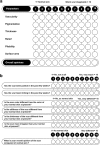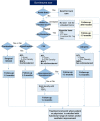Chinese expert consensus on clinical prevention and treatment of scar
- PMID: 30263894
- PMCID: PMC6154406
- DOI: 10.1186/s41038-018-0129-9
Chinese expert consensus on clinical prevention and treatment of scar
Abstract
Following injury, Asian skin has a tendency toward hyperpigmentation and scar formation than Caucasians. A standardized algorithm tailored to Asian patients, especially Chinese patients, is in great demand. Twelve independent, self-selected academic and military physicians from the department of burn/trauma, plastic surgery and dermatology with extensive experience in treating scars were assembled on January 17, 2015, establishing the consensus panel. This consensus was then appraised, drafted, reviewed, and finalized during the following 3 years, aiming to standardize and improve scar prevention and treatment in China. Hopefully, it may also provide some advices and references for the management of scarring in Asian patients.
Keywords: Burn; Consensus; Hypertrophic scar; Keloids; Laser; Scar assessment; Scar prevention; Scar treatment; Trauma.
Conflict of interest statement
Not applicable.Not applicable.The authors declare that they have no competing interests. The mandarin version of consensus has been published on Chinese Journal of Injury Repair and Wound Healing, December 2017, volume 12, No 6.
Figures


References
-
- Bijlard E, Uiterwaal L, Kouwenberg CA, Mureau MA, Hovius SE, Huygen FJ. A systematic review on the prevalence, etiology, and pathophysiology of intrinsic pain in dermal scar tissue. Pain Physician. 2017;20(2):1–13. - PubMed
Publication types
LinkOut - more resources
Full Text Sources
Other Literature Sources

